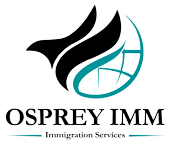REFUGEE
In Canada, refugees can make a claim for protection from within the country through the Refugee Protection Division (RPD) at the Immigration and Refugee Board of Canada (IRB). The process involves submitting your claim, undergoing an eligibility check, attending a hearing, and possibly appealing the decision. If successful, refugees are granted protection and can apply for permanent residency.
If you are seeking asylum or refugee status in Canada, it’s important to seek legal advice and support from experienced professionals to guide you through this complex process.

- Determining Eligibility for Refugee Status
To apply for refugee status in Canada, you need to meet certain conditions:
Convention Refugee: You must be outside your home country and unable or unwilling to return due to well-founded fear of persecution based on race, religion, nationality, membership in a particular social group, or political opinion.
Country of Asylum: You must be unable to seek protection from your country or from any other country, or it may be unsafe for you to return.
You can claim refugee status at any port of entry (airport, border, etc.) or from within Canada by making a claim to the Canada Border Services Agency (CBSA) or Immigration, Refugees and Citizenship Canada (IRCC).
- Making a Refugee Claim in Canada (Inside Canada)
To make a refugee claim inside Canada, follow these steps:
Step 1: Submit your claim for refugee protection at a local IRCC office or at a Canada Border Services Agency (CBSA) office. You'll need to fill out an application form called the Refugee Claimant Form (which includes detailed questions about your identity, background, and reasons for claiming refugee status).
Step 2: Receive your eligibility determination from the IRCC. The IRCC will assess whether you meet the basic criteria to be eligible to have your refugee claim heard by the Immigration and Refugee Board of Canada (IRB). They will review your claim to see if it is complete and if you are eligible for a hearing.
Step 3: The Refugee Protection Division (RPD) of the IRB will schedule a hearing to review your claim and determine if you are eligible for refugee protection in Canada. During the hearing, you will need to present evidence of your claim and explain why you fear returning to your home country.
- Refugee Protection Division Hearing
The hearing is the next major step in the process. This hearing is held in front of an IRB member who will review your claim and decide whether to grant you refugee status. During the hearing:
You will be asked about the circumstances in your home country and why you are seeking refugee protection.
You will need to provide evidence, including documents or witness testimonies, to support your claim. This could include news articles, medical records, police reports, or any other documentation that supports your fear of persecution.
If you do not have a lawyer, the hearing panel will typically allow you time to explain your case.
- Decision by the Refugee Protection Division (RPD)
After the hearing, the IRB member will make a decision regarding your refugee claim:
Positive Decision (Accepted): If the RPD accepts your refugee claim, you will be granted refugee protection in Canada and can stay in the country as a protected person. You can also apply for permanent residency (PR) through the Immigration and Refugee Protection Act (IRPA).
Negative Decision (Denied): If your claim is rejected, you may be ordered to leave Canada. However, you may have the option to appeal to the Refugee Appeal Division (RAD) if you believe the decision was made in error.
- Appeal Process (if applicable)
If your claim is denied, you can appeal the decision to the Refugee Appeal Division (RAD), but you must do this within 15 days of the negative decision. The RAD will review the decision to ensure the correct process was followed and that your claim was properly assessed.
If the RAD also rejects your claim, you will have the option of applying for a pre-removal risk assessment (PRRA) if you fear persecution or death in your home country. This is typically the last chance for reconsideration of your claim.
- Post-Claim Process
If your refugee claim is approved and you are granted refugee status in Canada, you will be able to:
Apply for permanent residency (PR).
Work and study in Canada.
Access health care and other services.
Sponsor family members to join you in Canada.
- Work and Study Permits for Refugees
If you're a refugee claimant in Canada, you can apply for a work permit once your claim is submitted. You must meet certain requirements, such as proving that you need to support yourself during the claim process.
INLAND REFUGEE CLAIM
This process is for those who are already inside Canada and want to initiate a refugee claim; in practice, this means individuals who have entered Canada under some other immigration status (tourist visa, study permit, etc.), and people who have crossed into Canada in between official ports of entry.
PORT OF ENTRY REFUGEE CLAIM
These are refugee claims that are initiated at an official Port of Entry; in practice, this is usually either at Canada’s land border with the US, or at an airport.

